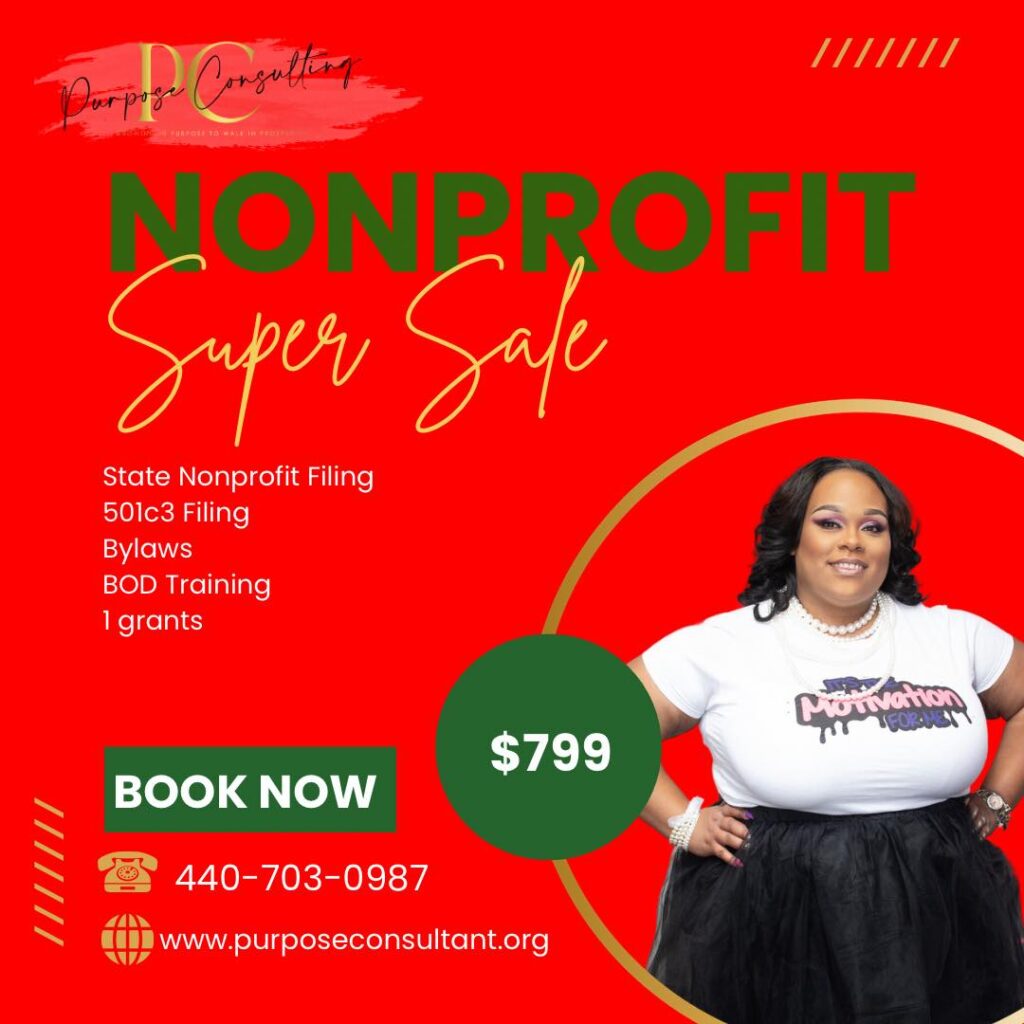Most non-profits are started by everyday people: A mom who wants to help her child; a father who wants to make sure that no one else suffers like his child did. Non-profits are born from people who want to make a difference. But the business of starting, running, and funding a non-profit takes a real understanding of navigating the endless processes it takes to manage one.
“A lot of non-profits are started from passion or pain,” Bianca Crawford explained. “Either something transpired in their lives, and it was hurtful, and they don’t want it to happen to someone else, or they overcame something, and they want to help other people overcome it, too.”
Crawford, the president of two non-profits, has worked for thirteen years in the non-profit space and understands the early mistakes people make in trying to get their non-profit up and running. “They think they can go get their Employee Identification Number (EIN) and their 501(c)3 and they forget that a non-profit is a business.”
Crawford helps guide her clients through the difficult process of successfully setting up non-profits. She warns that most people miss the small steps it takes to create a successful business. She consults people who want to start a non-profit in several areas:
• Business plans
• Setting up a 501(c)3
• Creating bylaws
• Business structure set up
• Grant writing
• Funding
• Donation drives
Her knowledge of the non-profit industry has helped scores of people who otherwise would struggle to get traction in the non-profit space.
“A non-profit has the ability to create generational wealth and a legacy, but we miss that because we think that things should happen at no cost, we don’t think we should pay ourselves and none of this is true,” Crawford said.

Crawford advises her clients to understand the power that a non-profit can create if they are correctly set up. With most people still working a job while they try to build their non-profit, Crawford helps with the tax/nontaxable education that people often miss.
Most non-profit organizations make the critical mistake of not structuring the bylaws of the company correctly. Crawford warns founders to protect their seats, so they cannot be removed from the operational side of the non-profit.
She also advises people to make sure they are committed to the mission of the non-profit. Most companies fail in their first year of business. Those who start a non-profit do it while maintaining a full-time job. So, they will need to be patient, grow slow, and learn the entire process of working in the space where non-profits live. Here are a few of Crawford’s suggestions.
CREATE A SUSTAINABILITY PLAN
Because most people don’t understand how to run a non-profit but still have a full-time job, they miss the critical funds that are needed to operate because they don’t understand how to create sustainability in the organization.
“What most people do is, not pay themselves when they have a non-profit,” Crawford said. “They think if they put all the money into the business, that they’re helping the cause, but funders see this as non-sustainable and deny grants based on this lack of understanding. It also takes a staff to run a business. A staff that isn’t getting paid can’t run. So, the organization doesn’t get funded because the business model is flawed.”
When foundations review the organization’s operations, they are looking for sound, concrete, and fundamental plans that will move the non-profit’s agenda forward. A president who isn’t paid means poor structure, which means a potential mishandling of funds.
This simple mistake will cause an organization to not get the funds needed to either grow or maintain the business. Crawford coaches her clients to pay themselves for their efforts. The business must create sustainability if it’s going to function properly.
UNDERSTAND STATE DOCUMENTS
Many times, organizations will miss the important documents that need to be registered at the state level for a non-profit to remain in good standing.
“A lot of people think that having a 501(c)3 makes them a non-profit. That isn’t true. It only means that the organization is tax-exempt. Everything that makes you a non-profit comes from the state level,” Crawford said.
There is the secretary of state, there is the attorney general, and there is the charitable registrations department that non-profit organizations must interact with. At every level, there’s paperwork that must be filed with each of these departments.
If you don’t register correctly with these departments, and attempt to fundraise without the correct approvals, your non-profit, if audited, could be shut down.

FILING TAXES
Most new non-profits don’t know they need to file their taxes, even if the organization didn’t make any money. Crawford warns non-profits that if they don’t understand this, they will eventually have their status revoked because they didn’t file their taxes.
“Most people think because they didn’t get any money, that they don’t have to file taxes, and that’s not true,” Crawford said.
When an organization’s status is revoked, they must quickly get their taxes filed. If they pass the deadline, they will have to go through a painful process to get the business back in good standing.
The ramifications of an organization being revoked can damage it for years. Federal funders who research non-profits before rewarding money use checks and balances to reward with confidence. If they see that an organization was revoked for not filing their taxes, it hurts their chances of winning a grant or funding.
“Funders use websites like GuideStar, and other sites to verify non-profit credentials, and they see problems, it weakens the organization’s chances of getting funded,” Crawford said.
Good Matters, Candid, and Front Door are all third-party sites that verify a non-profit standing. If a non-profit’s status has been revoked, it will sometimes permanently harm its ability to get funding. Crawford said it’s critical organizations understand this.
THE BOARD
Creating a board of advisors might be the single most important thing a person can do when starting a non-profit. The board should be made up of those who can advance the agenda of the non-profit, help raise capital, and have the time to invest in the mission of the non-profit.
Crawford warns that people must not just pick their friends to serve on their boards. Board members must have some level of understanding about boards if they’re going to serve, and they must have some experience in serving on a board.
The desire to create change through a non-profit is a noble deed. But it also comes with a deep appreciation of learning how to successfully run the business. With the right dedication and the proper tools, the mission can hopefully be accomplished.
Bianca Crawford can be reached at bcrawford@motivatedanempowered.com.


